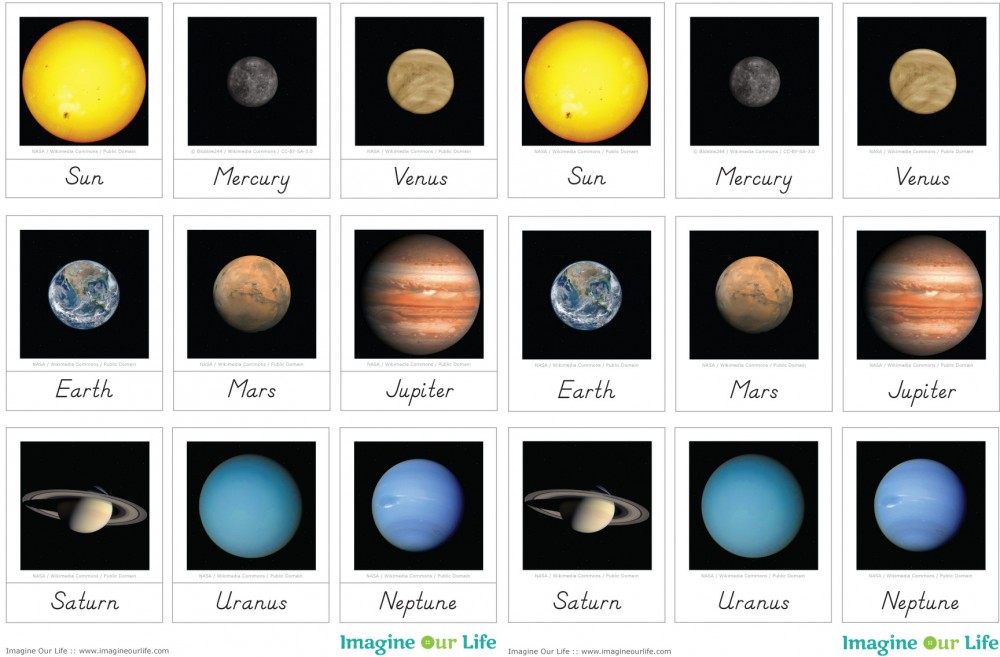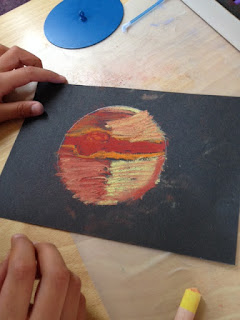There are many great Montessori posts on the solar system. This post may not add anything new to the blogosphere, but I feel it is necessary for my First Great Lesson posts. So here is a glimpse at what we do.
3-Part Planet Cards
3-part planet cards with handmade scale models.
These models are made from polystyrene balls. They are made to scale to our sun mat.
Imagine Our Life has this free download for planet cards.
[Photo from Image Our Life]
Scale of Planets
The scale of planets fascinates the elementary child and suits their imaginative mind. Lolly has a lovely post on her blog Elementary Observations here. She has a free download for a planet scale activity.
[Photo from Elementary Observations]
Solar System Riddles
Lolly also has this set of Solar System riddles which are perfect for the elementary classroom. Riddles are always a big hit in my class. These are also the perfect way to integrate language arts into the great lessons. I also encourage my children to write their own riddles.
[Photo from Elementary Observations]
Planet Research
As usual, I encourage my children to pick a planet to research. This is the sheet we use for the younger children.
I saw the original somewhere in blogsphere but can't remember where. The questions asked are:
Name of Planet?
What number is this planet from the Sun?
How far is this Planet from the Sun?
How big is this Planet from one end to another (diameter)?
What is the temperature of this Planet?
Does the Planet have an atmosphere?
Which gases make up its atmosphere?
Three facts about this Planet
I encourage each child to research one planet and together we create solar system research book. Sometimes a couple of children decide to research all the planets themselves and make their own booklets.
I have these astronomy research guides from Montessori for Everyone. I use this with my older children.
[Photo from Montessori For Everyone]
Astronomy 3-Part Cards
I also have these Astronomy Concepts Nomenclature Cards
[Photo from Montessori For Everyone]
There is something similar for free here.
Planet Related Experiments
The Geography Impressionistic Charts from Montessori for Everyone has a solar system chart and planet related experiment cards.
Noah doing the colour of Mars experiment.
These are the experiments in the pack.
- The bands of jupiter: It is very similar to this experiment on density.
- The colour of Mars [above].
- The impact of craters: A brief description on here and here.
Solar System Pastels Drawings
Solar System Dance
[Photo from Central Montessori Academy]
The solar system dance is really fun and best done outside. Each child takes on the role of a planet, the sun, the moon or an asteroid. Each role is described in detail and the children act out the solar system.
I made these labels for the children to wear while doing the dance. They can be downloaded for free here.
Distance of the Planets From Sun
[Photo from Beakers and Bumblebees]
The instructions for this solar system toilet paper activity can be found here.









.jpg&maxx=300&maxy=0)


































